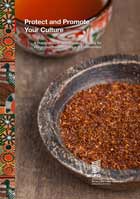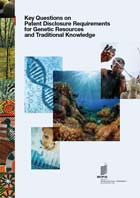WIPO Unveils Two New Publications on Traditional Knowledge
June 16, 2017
WIPO has unveiled two new public resources on intellectual property and genetic resources, traditional knowledge and traditional cultural expressions, including the Organization’s first-ever practical guide specifically for indigenous peoples and local communities.
WIPO Director General Francis Gurry officially launched the pair of publications June 16, 2017, on the sidelines of the 34th Session of the Intergovernmental Committee on Intellectual Property and Genetic Resources, Traditional Knowledge and Folklore (IGC).
Guide to intellectual property
Mr. Gurry underlined that the practical guide, entitled “Protect and Promote Your Culture: A Practical Guide to Intellectual Property for Indigenous Peoples and Local Communities,” is WIPO’s first publication specifically addressed to indigenous peoples and local communities.

Protect and Promote Your Culture
A Practical Guide to IP for Indigenous Peoples and Local Communities
The guide is designed to help indigenous peoples and local communities better understand the intellectual property system and its opportunities for them, with the aim of encouraging them to continue innovating and creating.
It highlights how indigenous peoples and local communities have used a range of tools provided by the intellectual property system to protect and promote their traditional knowledge and traditional cultural expressions.
Patent disclosure requirements
The second publication, entitled “Key Questions on Patent Disclosure Requirements for Genetic Resources and Traditional Knowledge,” is an updated and improved version of a study from 2004.
It incorporates the latest practical and empirical information provided by member states and other stakeholders on key legal and operational questions that have arisen related to patent disclosure requirements for genetic resources and traditional knowledge.

Key Questions on Patent
Disclosure Requirements for Genetic Resources and Traditional Knowledge
DownloadThe publication is meant to help inform policymakers and other stakeholders reflecting on disclosure requirements for genetic resources and traditional knowledge.